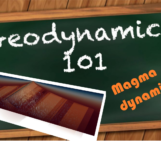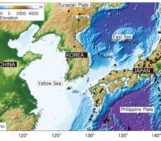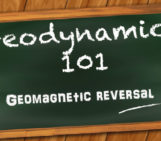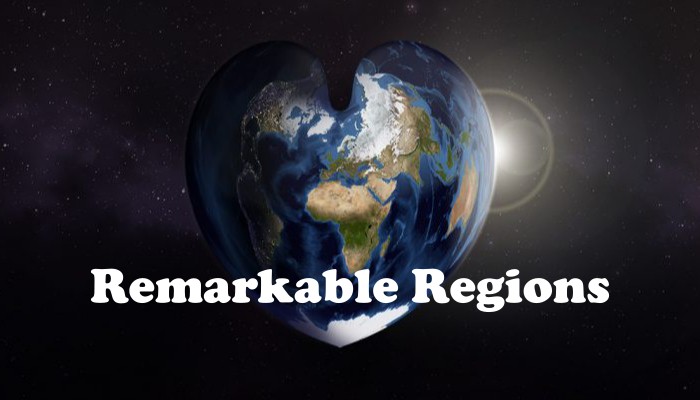
Every 8 weeks we turn our attention to a Remarkable Region that deserves a spot in the scientific limelight. To kick off this series, Anne Glerum introduces us to the eastern Mediterranean, which has been a natural laboratory for generations of scientists.
The name of our Remarkable Region is quite descriptive: it designates the region around and including the eastern part of the Mediterranean Sea. From the Latin word mediterraneus, meaning in the middle of land (Wikipedia), this Sea is a large body of water surrounded by land: the African, European and Asian continents. In turn, the convergence of these continents is what helped shape the region. Such a meeting of continents is in itself a promise of scientific treasure.
McKenzie phrased the cause of scientific interest in Mediterranean deformation a little more prosaically in 1972: “it is an accessible and reasonably well-studied area where the motion between the major plates involved is well known”. These reasons have only become more valid today. The first point will be readily agreed upon; perhaps you are even reading this blog post while stretched out on one of the Mediterranean’s beautiful beaches (or, more in line with my view of geo-people on vacation, after a week-long hike along the tops of an Alpine mountain chain).
McKenzie’s second point is related to both the first and the last: the more readily accessible a region is, the more easily data can be collected and hypotheses tested. At the same time, knowledge of the major plate motions provides boundary conditions to the region under investigation. The major plates involved in the Mediterranean (Fig. 1) are the Nubian and Arabian plates presently converging at about 0.6 and 1.5 cm/yr, respectively, with Eurasia (Nocquet 2012).
The interaction of these major plates was part of the evolution of the larger Tethys region with its Alpine-Himalayan orogenic belt now running from the Mediterranean to Indonesia (Hafkenscheid 2004). The Tethys region is named after the Proto-, Paleo- and Neo-Tethys oceanic domains (Berra and Angiolini, 2014), whose opening and closing resulted in the continental collisions forming this mountain chain. For a clearer mental picture, watch for example these reconstructions by Zahirovic et al. 2012, 2016.
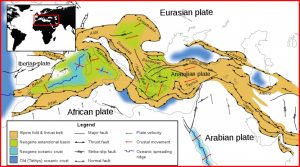
Figure 1: The Mediterranean region and its three major plates (Nubia, Arabia and Eurasia). Brown shaded areas indicate Alpine fold and thrust belts. Plate motions are indicated w.r.t. Eurasia by black arrows. Image credit: Modified by Anne Glerum from Woudloper (Own work) [CC BY-SA 1.0 (http://creativecommons.org/licenses/by-sa/1.0)], via Wikimedia Commons.
Within our remarkable region, the approximately Oligocene closure of the Neo-Tethys (e.g. Hafkenscheid 2004; Agard et al. 2011; Berra and Angiolini 2014) resulted in the continental collision of Arabia and Eurasia. Remnants of this Neo-Tethys subduction are the Bitlis and Zagros suture zones (Hafkenscheid 2004). To the west, in the Aegean region, the Nubian plate is still subducting, as it has been continuously for at least the last 100 My (e.g. van Hinsbergen et al. 2005; Jolivet and Brun 2010). This continuous subduction included oceanic domains as well as continental fragments of about 300-500 km (Facenna et al. 2003; van Hinsbergen et al. 2005; Jolivet and Brun 2010), of which the upper crust was scraped off and accreted as nappe stacks (van Hinsbergen et al. 2005).
While these nappe stacks are mostly preserved on mainland Greece (Jolivet and Brun 2010), back-arc extension has thinned the Aegean-west Anatolia region (van Hinsbergen and Schmid 2012; Faccenna et al. 2014; Menant et al. 2016;) after the Paleocene compressional phase that resulted in a.o. the Dinarides and Hellenides mountain belts (Faccenna et al. 2014, see Fig. 1). Due to the slab-retreat related extension, high-temperature methamorphic domes were exhumed (van Hinsbergen and Schmid 2012; Facenna et al. 2014). The speed of extension of the Aegean-west Anatolian region increased significantly around 15 Ma (Faccenna et al. 2003; van Hinsbergen and Schmid 2012; Menant et al. 2016), coincident with a bending of the subduction zone, possibly facilitated by tearing of the Aegean slab below western Anatolia (Jolivet et al. 2015).
At the present-day, Nubian subduction and trench retreat are still ongoing. GPS velocity fields illustrate how the motion of the Aegean and Anatolian plates differs from the overall Nubia-Eurasia convergence: their counter-clockwise rotation is facilitated by the strike-slip North Anatolian Fault and Trough and the East Anatolian Fault and increases towards the Hellenic trench (Le Pichon and Kreemer 2010; Nocquet 2012). These motions result from the interplay –in various proportions according to different authors- of the continental escape of Anatolia, Hellenic trench retreat, gravitational potential energy variations and asthenospheric flow (e.g. Le Pichon and Kreemer 2010; Faccenna and Becker 2010; England et al. 2016; Menant et al. 2016).
All in all, the present eastern Mediterranean has a complex geological history that has sparked and continues to spark the interest of many geo-scientists. Faccenna et al. (2014) neatly summarize the new concepts that were coined and/or tested based on the accessibility, wealth of data and known boundary conditions of the Mediterranean region, such as oroclinal bending and the opening of back-arc basins, extensional and strike-slip tectonics in an overall convergent setting, continental escape, trench rollback and slab tearing. A remarkable region indeed!
References: Agard, P. et al. (2011), Zagros orogeny: a subduction-dominated process, Geological Magazine, Cambridge University Press, 148 (5—6), 692—725. Berra, F. and Angiolini, L. (2014), The Evolution of the Tethys Region throughout the Phanerozoic: A Brief Tectonic Reconstruction in AAPG Memoir 106: Petroleum Systems of the Tethyan Region, 1—27. England, P., Houseman, G. and Nocquet, J.-M. (2016), Constraints from GPS measurements on the dynamics of deformation in Anatolia and the Aegean, J. Geophys. Res.: Solid Earth, 121. Faccenna, C., Jolivet, L., Piromallo, C. and Morelli, A. (2003), Subduction and depth of convection in the Mediterranean mantle, J. Geophys. Res., 108, B2, 2099. Faccenna, C. and Becker, T. W. (2010), Shaping mobile belts by small-scale convection, Nature, 465. Faccenna, C. et al. (2014), Mantle dynamics in the Mediterranean, Rev. Geophys., 52. Hafkenscheid, E. (2004), Subduction of the Tethys Ocean reconstructed from plate kinematics and mantle tomography. PhD thesis, Utrecht University. Jolivet, L. and Brun, J.-P. (2010), Cenozoic geodynamic evolution of the Aegean, Int. J. Earth Sci., 99, 109—138. Jolivet, L. et al. (2013), Aegean tectonics: Strain localization, slab tearing and trench retreat, Tectonophysics, 597—598, 1—33. Jolivet, L. et al. (2015), The geological signature of a slab tear below the Aegean, Tectonophysics, 659, 166—182. Le Pichon, X. and Kreemer, C. (2010), Kinematic Evolution of the Eastern Mediterranean and Middle East and Its Implications for Dynamics, Annu. Rev. Earth Pl. Sc., 38, 323—351. McKenzie, D. (1972), Active Tectonics of the Mediterranean Region. Geophys. J. R. astr. Soc., 30, 109—185. Menant, A., Jolivet, L. and Vrielynck, B. (2016), Kinematic reconstructions and magmatic evolution illuminating crustal and mantle dynamics of the eastern Mediterranean region since the late Cretaceous, Tectonophysics, 675, 103—140. Nocquet, J.-M. (2012), Present-day kinematics of the Mediterranean: A comprehensive overview of GPS results, Tectonophysics, 579, 220—242. Van Hinsbergen, D. J. J., Hafkenscheid, E., Spakman, W., Meulenkamp, J. E. and Wortel, R. (2005), Nappe stacking resulting from subduction of oceanic and continental lithosphere, Geology, 33, 325—328.

